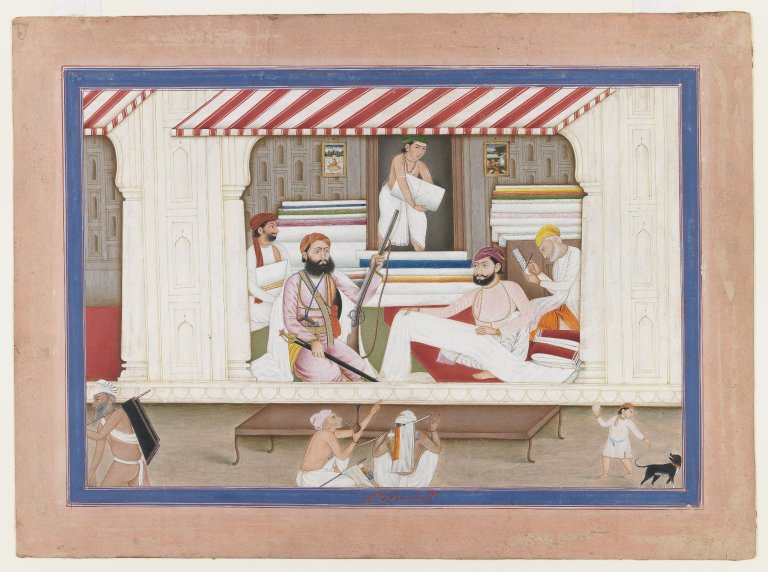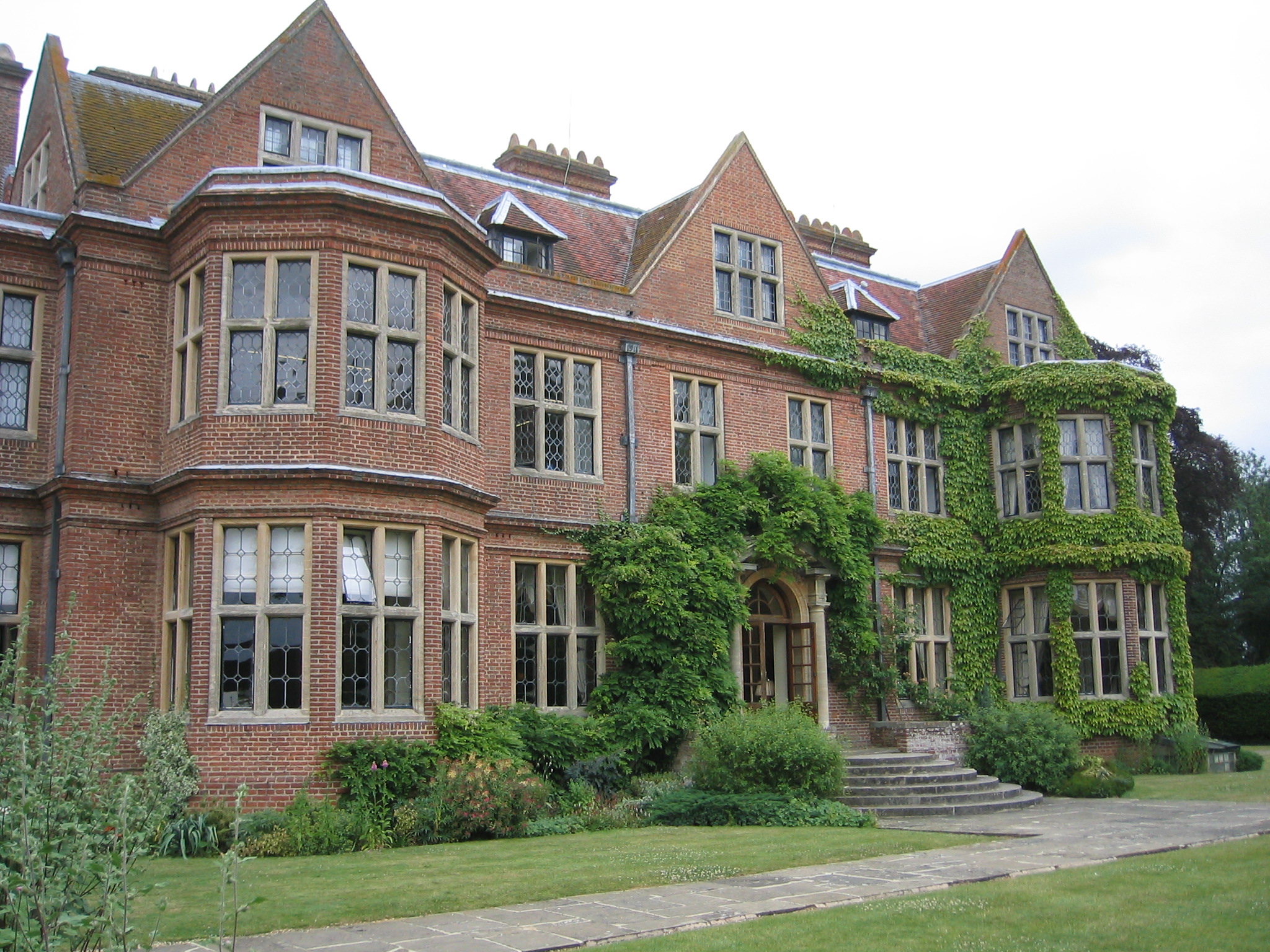|
Holcombe House
Holcombe House is a large Grade II* listed country house located near Painswick, Gloucestershire. The house is a fine example of an Arts and Crafts Cotswolds manor house. History Holcombe House was originally built for a wealthy clothier from Painswick in the late 1600s, and was later enlarged and remodelled in the early 1900s by Detmar Blow in the Arts and Crafts manner. The house was subject of a painting by Charles March Gere in 1926. There are a number of associated listed structures associated with the house including the boundary walls and dovecote A dovecote or dovecot , doocot ( Scots) or columbarium is a structure intended to house pigeons or doves. Dovecotes may be free-standing structures in a variety of shapes, or built into the end of a house or barn. They generally contain pige ... which are both Grade II listed. References External links Grade II* listed houses in Gloucestershire Arts and Crafts architecture Houses completed in the 17th ... [...More Info...] [...Related Items...] OR: [Wikipedia] [Google] [Baidu] |
Grade II* Listed
In the United Kingdom, a listed building or listed structure is one that has been placed on one of the four statutory lists maintained by Historic England in England, Historic Environment Scotland in Scotland, in Wales, and the Northern Ireland Environment Agency in Northern Ireland. The term has also been used in the Republic of Ireland, where buildings are protected under the Planning and Development Act 2000. The statutory term in Ireland is "Record of Protected Structures, protected structure". A listed building may not be demolished, extended, or altered without special permission from the local planning authority, which typically consults the relevant central government agency, particularly for significant alterations to the more notable listed buildings. In England and Wales, a national amenity society must be notified of any work to a listed building which involves any element of demolition. Exemption from secular listed building control is provided for some buildin ... [...More Info...] [...Related Items...] OR: [Wikipedia] [Google] [Baidu] |
Painswick
Painswick is a town and civil parish in the Stroud District in Gloucestershire, England. Originally the town grew from the wool trade, but it is now best known for its parish church's yew trees and the local Rococo Garden. The village is mainly constructed of locally quarried Cotswold stone. Many of the buildings feature south-facing attic rooms once used as weavers' workshops. Painswick stands on a hill in the Stroud district, overlooking one of the Five Valleys, between Stroud and Gloucester. It has narrow streets and traditional architecture. It has a cricket and rugby team and there is a golf course on the outskirts of the town. Painswick Beacon is in the nearby hills. History There is evidence of settlement in the area as long ago as the Iron Age. This can be seen in Kimsbury hill fort, a defensive earthwork on nearby Painswick Beacon, which has wide views across the Severn Vale. The local monastery, Prinknash Abbey, was established in the 11th century. Painswick itsel ... [...More Info...] [...Related Items...] OR: [Wikipedia] [Google] [Baidu] |
Gloucestershire
Gloucestershire ( abbreviated Glos) is a county in South West England. The county comprises part of the Cotswold Hills, part of the flat fertile valley of the River Severn and the entire Forest of Dean. The county town is the city of Gloucester and other principal towns and villages include Cheltenham, Cirencester, Kingswood, Bradley Stoke, Stroud, Thornbury, Yate, Tewkesbury, Bishop's Cleeve, Churchdown, Brockworth, Winchcombe, Dursley, Cam, Berkeley, Wotton-under-Edge, Tetbury, Moreton-in-Marsh, Fairford, Lechlade, Northleach, Stow-on-the-Wold, Chipping Campden, Bourton-on-the-Water, Stonehouse, Nailsworth, Minchinhampton, Painswick, Winterbourne, Frampton Cotterell, Coleford, Cinderford, Lydney and Rodborough and Cainscross that are within Stroud's urban area. Gloucestershire borders Herefordshire to the north-west, Worcestershire to the north, Warwickshire to the north-east, Oxfordshire to the east, Wiltshire to the south, Bristol and Somerset ... [...More Info...] [...Related Items...] OR: [Wikipedia] [Google] [Baidu] |
Cotswolds
The Cotswolds (, ) is a region in central-southwest England, along a range of rolling hills that rise from the meadows of the upper Thames to an escarpment above the Severn Valley and Evesham Vale. The area is defined by the bedrock of Jurassic limestone that creates a type of grassland habitat rare in the UK and that is quarried for the golden-coloured Cotswold stone. The predominantly rural landscape contains stone-built villages, towns, and stately homes and gardens featuring the local stone. Designated as an Area of Outstanding Natural Beauty (AONB) in 1966, the Cotswolds covers making it the largest AONB. It is the third largest protected landscape in England after the Lake District and Yorkshire Dales national parks. Its boundaries are roughly across and long, stretching southwest from just south of Stratford-upon-Avon to just south of Bath near Radstock. It lies across the boundaries of several English counties; mainly Gloucestershire and Oxfordshire, and parts ... [...More Info...] [...Related Items...] OR: [Wikipedia] [Google] [Baidu] |
Cloth Merchant
In the Middle Ages or 16th and 17th centuries, a cloth merchant was one who owned or ran a cloth (often wool) manufacturing or wholesale import or export business. A cloth merchant might additionally own a number of draper's shops. Cloth was extremely expensive and cloth merchants were often very wealthy. A number of Europe's leading banking dynasties such as Medici and Berenberg built their original fortunes as cloth merchants. In England, cloth merchants might be members of one of the important trade guilds, such as the Worshipful Company of Drapers. Alternative names are clothier, which tended to refer more to someone engaged in production and the sale of cloth, whereas a cloth merchant would be more concerned with distribution, including overseas trade, or haberdasher, who were merchants in sewn and fine fabrics (e.g. silk) and in London, members of the Haberdashers' Company. The largely obsolete term merchant taylor also describes a business person who trades in textiles ... [...More Info...] [...Related Items...] OR: [Wikipedia] [Google] [Baidu] |
Detmar Blow
Detmar Jellings Blow (24 November 1867 – 7 February 1939) was a British architect of the early 20th century, who designed principally in the arts and crafts style. His clients belonged chiefly to the British aristocracy, and later he became estates manager to the Duke of Westminster. The fiction that he was a descendant of the English restoration composer John Blow was started in 1910 by Detmar Blow's wife Winifred, a member of the aristocratic Tollemache family, as a means of obtaining a licence from St Paul's Cathedral for the marriage of herself and Detmar. Life and career Son of Jellings Blow, of Hilles, Stroud, Gloucestershire, Blow was one of the last disciples of John Ruskin, whom as a young man he had accompanied on his last journey abroad. Detmar was friends with the Wyndham family, who at their country house Clouds in Wiltshire created a salon frequented by many of the leading intellectual and artistic figures of the day, known as The Souls, who welcomed Blow into ... [...More Info...] [...Related Items...] OR: [Wikipedia] [Google] [Baidu] |
Charles March Gere
Charles March Gere Royal Academician, RA Royal Watercolour Society, RWS (5 June 1869 – 3 August 1957) was an England, English Painting, painter, Illustration, illustrator of books, and stained glass and embroidery designer associated with the Arts and Crafts movement. A member of the Birmingham Group (artists), Birmingham Group of Artist-Craftsmen that formed around Joseph Southall, Gere taught at the Birmingham School of Art under Edward R. Taylor and illustrated many books for William Morris's Kelmscott Press, including the frontispiece of Morris's own ''News from Nowhere''.E. R. PayneGere, Charles March (1869–1957) rev., Oxford Dictionary of National Biography, Oxford University Press, 2004, accessed 13 July 2007 His sister, Margaret Gere, was also an painter and studied under him at the Birmingham School. Gere painted a signal work in 1897 entitled ''The Lady of Grey Days''. The painting was bought in 1912 and given to Aurora Howard by her mother. She was a descendant o ... [...More Info...] [...Related Items...] OR: [Wikipedia] [Google] [Baidu] |
Dovecote
A dovecote or dovecot , doocot ( Scots) or columbarium is a structure intended to house pigeons or doves. Dovecotes may be free-standing structures in a variety of shapes, or built into the end of a house or barn. They generally contain pigeonholes for the birds to nest. Pigeons and doves were an important food source historically in the Middle East and Europe and were kept for their eggs and dung. History and geography The oldest dovecotes are thought to have been the fortress-like dovecotes of Upper Egypt, and the domed dovecotes of Iran. In these regions, the droppings were used by farmers for fertilizing. Pigeon droppings were also used for leather tanning and making gunpowder. In some cultures, particularly Medieval Europe, the possession of a dovecote was a symbol of status and power and was consequently regulated by law. Only nobles had this special privilege, known as ''droit de colombier''. Many ancient manors in France and the United Kingdom have a dovecote st ... [...More Info...] [...Related Items...] OR: [Wikipedia] [Google] [Baidu] |
Grade II* Listed Houses In Gloucestershire
Grade most commonly refers to: * Grade (education), a measurement of a student's performance * Grade, the number of the year a student has reached in a given educational stage * Grade (slope), the steepness of a slope Grade or grading may also refer to: Music * Grade (music), a formally assessed level of profiency in a musical instrument * Grade (band), punk rock band * Grades (producer), British electronic dance music producer and DJ Science and technology Biology and medicine * Grading (tumors), a measure of the aggressiveness of a tumor in medicine * The Grading of Recommendations Assessment, Development and Evaluation (GRADE) approach * Evolutionary grade, a paraphyletic group of organisms Geology * Graded bedding, a description of the variation in grain size through a bed in a sedimentary rock * Metamorphic grade, an indicatation of the degree of metamorphism of rocks * Ore grade, a measure that describes the concentration of a valuable natural material in the surroun ... [...More Info...] [...Related Items...] OR: [Wikipedia] [Google] [Baidu] |
Houses Completed In The 17th Century
A house is a single-unit residential building. It may range in complexity from a rudimentary hut to a complex structure of wood, masonry, concrete or other material, outfitted with plumbing, electrical, and heating, ventilation, and air conditioning systems.Schoenauer, Norbert (2000). ''6,000 Years of Housing'' (rev. ed.) (New York: W.W. Norton & Company). Houses use a range of different roofing systems to keep precipitation such as rain from getting into the dwelling space. Houses may have doors or locks to secure the dwelling space and protect its inhabitants and contents from burglars or other trespassers. Most conventional modern houses in Western cultures will contain one or more bedrooms and bathrooms, a kitchen or cooking area, and a living room. A house may have a separate dining room, or the eating area may be integrated into another room. Some large houses in North America have a recreation room. In traditional agriculture-oriented societies, domestic animals such as c ... [...More Info...] [...Related Items...] OR: [Wikipedia] [Google] [Baidu] |

.jpg)



